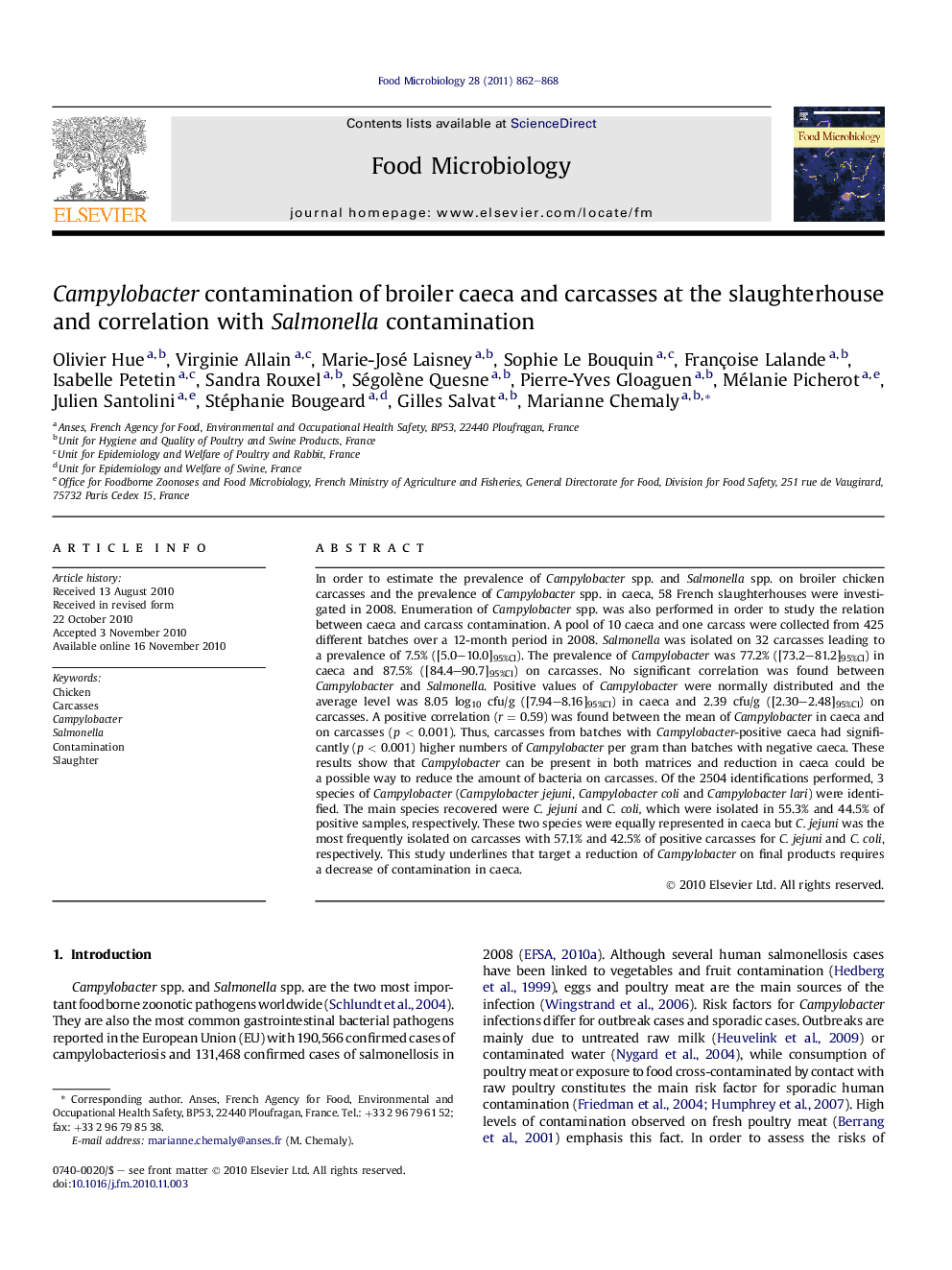| کد مقاله | کد نشریه | سال انتشار | مقاله انگلیسی | نسخه تمام متن |
|---|---|---|---|---|
| 4363145 | 1301544 | 2011 | 7 صفحه PDF | دانلود رایگان |

In order to estimate the prevalence of Campylobacter spp. and Salmonella spp. on broiler chicken carcasses and the prevalence of Campylobacter spp. in caeca, 58 French slaughterhouses were investigated in 2008. Enumeration of Campylobacter spp. was also performed in order to study the relation between caeca and carcass contamination. A pool of 10 caeca and one carcass were collected from 425 different batches over a 12-month period in 2008. Salmonella was isolated on 32 carcasses leading to a prevalence of 7.5% ([5.0–10.0]95%CI). The prevalence of Campylobacter was 77.2% ([73.2–81.2]95%CI) in caeca and 87.5% ([84.4–90.7]95%CI) on carcasses. No significant correlation was found between Campylobacter and Salmonella. Positive values of Campylobacter were normally distributed and the average level was 8.05 log10 cfu/g ([7.94–8.16]95%CI) in caeca and 2.39 cfu/g ([2.30–2.48]95%CI) on carcasses. A positive correlation (r = 0.59) was found between the mean of Campylobacter in caeca and on carcasses (p < 0.001). Thus, carcasses from batches with Campylobacter-positive caeca had significantly (p < 0.001) higher numbers of Campylobacter per gram than batches with negative caeca. These results show that Campylobacter can be present in both matrices and reduction in caeca could be a possible way to reduce the amount of bacteria on carcasses. Of the 2504 identifications performed, 3 species of Campylobacter (Campylobacter jejuni, Campylobacter coli and Campylobacter lari) were identified. The main species recovered were C. jejuni and C. coli, which were isolated in 55.3% and 44.5% of positive samples, respectively. These two species were equally represented in caeca but C. jejuni was the most frequently isolated on carcasses with 57.1% and 42.5% of positive carcasses for C. jejuni and C. coli, respectively. This study underlines that target a reduction of Campylobacter on final products requires a decrease of contamination in caeca.
► Salmonella and Campylobacter in broilers at the slaughterhouse.
► Qualitative and quantitative assessment.
► No relation between Salmonella and Campylobacter.
► Correlation between caeca and carcass contamination.
► Predomination of Campylobacter jejuni.
Journal: Food Microbiology - Volume 28, Issue 5, August 2011, Pages 862–868